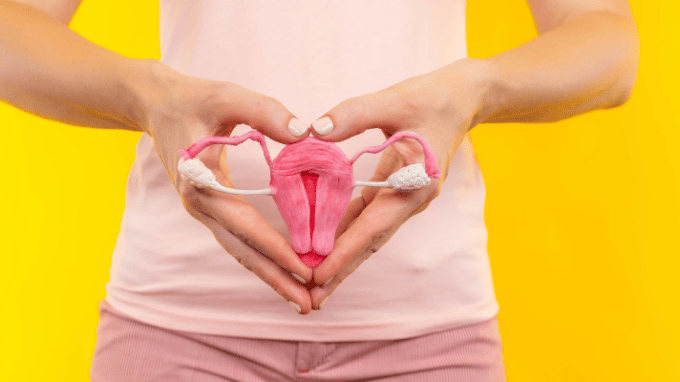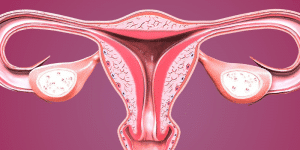When it comes to fertility, fallopian tube health is crucial, and a blocked fallopian tube, or tubes, can be a serious cause for concern. While it may seem scary, the good news is that blocked fallopian tubes are not a hopeless condition, as there are a number of ways to unblock them and hence improve and restore fertility health.
While many women find themselves in the unfortunate situation of being unable to conceive after years of trying, having blocked fallopian tubes is often one of the main causes for this. In fact, it is estimated that approximately one in four women with infertility have a tubal blockage of some sort.
These two narrow tubes that connect the ovaries to the uterus are necessary for allowing eggs to travel from one ovary to the uterus, and serve as the meeting grounds for egg and sperm during conception. Thus, having unobstructed tubes is not only necessary but their crucial role is easily apparent.
Causes of Blocked Fallopian Tubes
With how common blocked fallopian tubes are, it’s no surprise that there are several causes, among them, are the following:
- Pelvic Inflammatory Disease: Pelvic inflammatory disease is a common infection that arises when certain sexually transmitted infections, such as gonorrhea or chlamydia, are left untreated for a long time. The infection causes inflammation of the fallopian tubes, which can then lead to blockage.
- Endometriosis: Endometriosis is a condition where tissue that normally lines the uterus grows, not only outside of it but in some cases can grow in the fallopian tubes and lead to blockage.
- Fibroids and Cysts: Fibroids and cysts are non-cancerous growths that grow on the walls of the uterus. While many of these are commonly on the uterus and ovaries, in some cases these growths grow in the fallopian tubes and can lead to blockage.
- Scarring from Previous Surgeries: In some severe cases, previous surgeries can result in scarring if surgeons or procedures resulted in cutting into the fallopian tube. This scarring and buildup of scar tissue can ultimately lead to blockage.
- Chronic Infection in the Urinary Tract or Bladder: A urinary tract infection, or UTI, can do more than a common bladder issue, when left untreated, these infections can lead to scarring and inflammation of the fallopian tubes, which can ultimately lead to a blockage.
- Ectopic Pregnancy: An ectopic pregnancy is a condition that arises when the egg implants within the fallopian tube instead of within the uterus. Given that fallopian tubes are narrow, this can lead to blockages and severe risk for baby and mother that should be treated immediately.
- Endometrial Hyperplasia: Endometrial hyperplasia refers to abnormal growth of the endometrium, which is the lining of the uterus, and the fallopian tubes. Ultimately, this condition is typically caused by excessive estrogen production.
- Hydrosalpinx Blockage: A hydrosalpinx blockage is a result of infection within the fallopian tube, typically due to a sexually transmitted infection and occurs when fluid fills and enlarges a fallopian tube leading to blockage.
Additionally, there are additional fallopian tube abnormalities that may lead to blockages or increase the chance of a blockage and compromised fertility.
Symptoms of a Blocked Fallopian Tube
While it may be nice to consider some key symptoms to be on the lookout for, the worst thing about having a blocked fallopian tube is that in many cases, women may not know there is a blockage until they try to get pregnant. This being said, it is important to keep track of any changes in periods or menstrual cycle as well as conception difficulties and to let a doctor know if anything abnormal is noticed or there is a difficulty getting pregnant.
In certain cases, a person suffering from the hydrosalpinx blockage may experience regular pain on the affected side of the abdomen. As such, it is important to pay close attention to any pain that is experienced in the abdomen for prolonged periods of time.
Additionally, it is important to note that there are symptoms that can also arise due to the underlying conditions that cause a blockage in the first place. If a blockage is caused by endometriosis, for example, additional symptoms may be experienced such as painful and heavy periods and pelvic pain.
As previously mentioned, having one or both fallopian tubes blocked can make it near impossible to get pregnant naturally. However, with adequate treatment, things can be cleared up and fertility restored.
Treating for a Blocked Fallopian Tube
In the case of endometriosis, there are a number of drugs that can be taken to relieve the pain and discomfort, and in some cases, saline infusions may also be used. However, it is important to note that in some cases, advanced treatment may be required in order to alleviate issues surrounding endometriosis completely.
A doctor may order for a hysterosalpingography test if there has been trouble getting pregnant, or there have been problems with pregnancy such as multiple miscarriages. While the primary purpose of a HSG is to help diagnose the causes of infertility, this type of test flushes dye through the uterus and fallopian tubes while X-rays are taken to identify any issues. Because this test moves fluid through the tubes it is possible that it can clear minor blockages that are present.
This is an advanced non-surgical treatment that may be done immediately after having a hysterosalpingography procedure and involves the use of a catheter and is primarily used for blockages that are close to the uterus. With this procedure, a doctor will guide the catheter to the affected area with the help of X-rays or ultrasounds. Once reached, a small balloon will be inflated to help remove the blockage.
Tubal surgery is often a last resort when other therapies have failed to unblock a fallopian tube. In this procedure, a doctor performs an incision in the abdomen to reach the affected fallopian tube and then removes the blockage manually. The incision is then stitched up, as is the damaged tube and other parts of the tubes and alternate tube will remain intact for a successful future conception.
While medical intervention or surgical procedures are the most common approach to treating a blocked fallopian tube, there are natural remedies that can be done as well to aid in the process. These primarily include dietary changes and herbal remedies.
For a complete look at Natural Approaches to Overcome Blocked Fallopian Tubes, click here.
Having blocked fallopian tubes can be a major cause of worry and concern. However, it is important to gather all the information needed about the condition and approach it with a positive attitude. With advanced treatment options and proper care and precaution, you can get your fertility back in shape and be on the road to conceiving and having a healthy baby.





